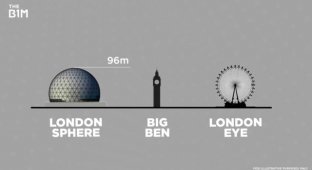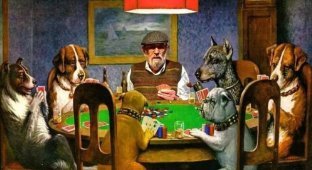Statue of a brown dog that provoked large-scale riots in London (10 photos + 1 video)
The brown dog statue is, of course, a cute piece of art. It's also a representation of controversial and ambiguous political and scientific history. 
To understand the seriousness of the symbolism of this cute dog sculpture, we need to go back to 1903, when accusations of inhumane (and illegal) experiments on a brown terrier at University College London caused public outrage. 
Original monument
On February 2, 1903, at a lecture to medical students, scientists decided to demonstrate on a living dog the control of the nervous system over the secretion of the pancreas. The experimental subject was a brown terrier mix, which had already been vivisected several times. In December 1902, his stomach was cut open and the pancreatic duct was tied. 
Ernest Henry Starlin
Before the lecture, physiologist Ernest Henry Starlin, who conducted the experiment with his colleague and discoverer of hormones William Maddock Bayliss, again opened the abdominal cavity to check the condition of the pancreas. Then he made an incision in the neck to expose the salivary gland and attach electrodes to it.
After which the animal was wheeled into the lecture hall, where electrical stimulation of the salivary gland took place for half an hour. However, the experimenters were unable to confirm their hypotheses. At the end of the demonstration, student Henry Dale, a future Nobel laureate, killed the dog with a knife to the heart. 
William Maddock Bayliss
Although the medical professor in question won a libel case, the incident sparked a wave of support for the British anti-vivisection movement. 
Re-enactment of William Bayliss's 1903 libel trial
In response, an original statue of a brown dog was erected in the London borough of Battersea. Battersea, a renowned centre of progressive politics, was home to London's only anti-vivisection hospital (which did not experiment on animals or employ doctors who approved of the practice), and was a suitable friendly site for protest.
The memorial included a bronze sculpture of the now-famous brown terrier, drinking fountains for humans and dogs, and a sign detailing the dog's suffering. 
Clashes during protests, 1906
UC medical students were outraged, arguing that the dog had been properly anesthetized (possibly true), that no law had been broken (also possibly), and that similar things had happened at other universities. 
A demonstration on 19 March 1910 in Trafalgar Square to protest the removal of the statue
After a year of protests, a group of medical students decided to take matters into their own hands and attacked the memorial with a crowbar and a sledgehammer. Although the incident was prevented by the 24-hour guards who were posted to the dog statue, it marked the beginning of the Thunderbird Confrontation, which saw medical students from various prestigious English universities clash with anti-vivisectionists, suffragettes, trade unionists, socialists and other progressive factions on the streets of Battersea, and battle with the police in Trafalgar Square. 
March 11, 1910 - empty space where the Brown Dog used to stand
The press was mostly supportive of the medical students, offering mind-blowing headlines like "Medical Students Gallantly Fight Women." 
Modern version of the monument
In 1909, when the Conservative council came to power in Battersea, the situation finally defused. Tired of the ongoing controversy, the new government tore down the statue under cover of night on 10 March 1910. Despite petitions and injunctions taken to restore it, the statue was hidden in a barn and eventually destroyed. 
The plaque on the monument read: "In memory of the dog who died in the laboratory of the London College. Vivisected for two months, passed from one vivisector to another, until death set him free. 232 dogs shared her fate in 1902. Men and women of England, how long will this go on?"
However, the anti-vivisection movement remains active in Britain, and the Brown Dog Affair remains a landmark event in its history. In 1985, 75 years after the original was demolished, a new statue of the brown dog was erected in Battersea Park, where it remains to this day.
The new statue (by Nicola Hicks), which retains the original's controversial inscription, is also a testament to the ongoing efforts to champion animal rights in a new era of scientific research.






























